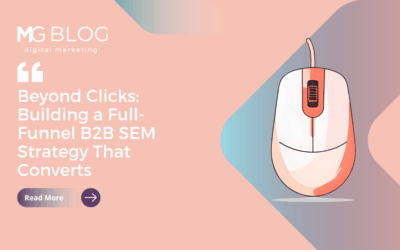
Analyst and influencer relations is about engaging credible people in a specific market and building relationships. Whether you’re looking for an industry expert to test your messaging, validate your press activity, praise your company publicly or send a customer your way, an advocate can be a valuable tool in your marketing and PR toolbox.
For many companies, however, analyst and influencer relations can be daunting if it’s your first time engaging a third party. To that end, here are a few tried and true strategies and tactics to get your program off the ground and well on its way to success.
- Weigh Your Paid Engagement Options — One of the toughest questions is always whether or not you should enter into paid engagements in order to gain influence and deepen your relationships. Especially in a startup environment where budgets are tight, you might not always have the resources for paid programs. The good news is, many analysts and influencers will take an introductory meeting with no strings attached in order to ensure they know of all the players in their space. Take advantage of those opportunities by speaking with a range of firms and determine which are are the best fit for your needs. You can start small with introductory briefings and then move up to engaging on a one-off paid project. If things go well, you might find yourself engaging in a long-term and mutually beneficial partnership. Always remember that contracts are negotiable.
- Do Your Research — Finding the right analyst or influencer starts with good old-fashioned research. Make sure that the contact you’re engaging has a well-established practice relevant to your market and any firm they represent has a positive industry reputation. Next, find the right person to talk to by reviewing their previous work, quotes in media coverage or even check out what makes them tick personally via social media. If, based on your research of previous reports and media coverage, you find that they’re talking to your competitors, they should be talking to you.
- Get Your Messaging Straight — Before you even think about having a conversation with an analyst or influencer, make sure you have your story straight. As with everything in life, first impressions are incredibly important, so you want to start with your best foot forward. Presentations can be useful, but don’t feel you need to read straight from the slides — keep the conversations interactive. Also, note that firms will save the materials in their analyst database for their colleagues to reference long after you’ve spoken with a contact, so your materials can have a longer shelf life than you think. To tell a compelling story, weave together information about your company’s leadership, origins, funding, the problem you’re solving, what’s unique about your solution, where you fit in the market and where you’re headed. You’ll find that industry analysts can also be a good resource in helping you sharpen the story you tell to the market, so be open to input for message testing.
- Admit You Have Competitors — Every company thinks they are 100 percent unique and couldn’t possibly have any competitors. The reality of the situation is that analysts need some sort of starting point in order to understand where you play in the market. The key to addressing your competition the right way is ensuring you always frame the conversation in terms of competitive differentiators. They will want to put you in a bucket for comparison, so help them by defining your space using the right categories and descriptions.
- Listen, Don’t Just Talk — After giving your spiel about how great your company is … take a breath. Analysts and influencers don’t just want to gather information, they also want to share with you their expertise. Make sure you take advantage of the briefing time by asking them smart questions. Also, don’t forget to ask about their research agendas for the coming year and where you might fit into their overall work pipeline. Lastly, use it as a chance to gain greater market perspective or hear how they could potentially validate your product.
- Back Your Story Up — It’s great that you’ve told a good story and listened to the feedback, but analysts and influencers will want to hear from your customers too to make sure you’re not just blowing smoke. Some analyst firms may require customer interviews as a requirement for report inclusion and will request unbiased “alone time” to get user insight on your technology. While you might not have customer references to share from the start, show momentum and push the relationship forward by offering up references as they become available. While big brand names are nice, smaller companies with innovative use cases can be equally as valuable to put forth.
- Meet and Greet — Whether virtual or eventually in-person events again, reach out to analysts and influencers at industry and community events wherever they are congregating. From networking events, tradeshows and industry conferences to grabbing a virtual coffee, reaching out proactively to make a more personal introduction can go a long way in keeping you and your company top of mind.
- Follow Up — This may seem like a no-brainer, but analysts are often under deadline to get research reports done on deadline and influencers can be in high demand. If you promise data, a customer or other resources, make sure you follow through. As we’ve all seen this past year, things can always quickly change, so reach out at least quarterly to make sure you aren’t missing any opportunities.
These best practices are just the tip of the iceberg in terms of getting started, so don’t try to take on too much to start and get overwhelmed. Once you get the ball rolling, you’ll face greater challenges, such as how to win over analysts and influencers that aren’t on your side — but that’s a blog for another day. The key for getting started is doing your research, starting small and keeping efforts focused. Stick to these tips and you’ll be a “cool” vendor soon enough.
Contact us to learn more about what it takes to engage influencers.
This blog was originally published in 2018 and updated with new information.
Photo by Dylan Gillis on Unsplash



